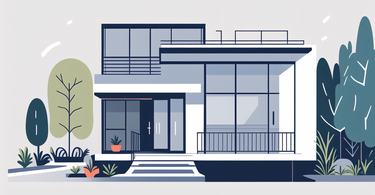The Essentials of Installing a Swinging Gate and Privacy Fence
Understanding the Role of a Swinging Gate in Home Security
A swinging gate is more than just an entry point. It's your home's first line of defense. These gates deter intruders and control access to your property. They come in various styles, from simple to ornate. Some have advanced features like keypad entry or remote control. A well-chosen gate adds both security and curb appeal to your home.

When selecting a gate, consider its material and construction. Steel and wrought iron are strong choices. They resist force and weathering. Wood gates offer a classic look but may need more upkeep. Aluminum is lightweight and rust-resistant, ideal for coastal areas. The gate's height and design also matter. Taller gates with minimal gaps provide more privacy and security.
Evaluating Materials: What to Look for in a Durable Privacy Fence
A durable privacy fence should last for years with minimal maintenance. The right material is key. Wood is a popular choice, offering natural beauty and customization. Cedar and redwood resist decay naturally. Pressure-treated pine is affordable but may warp over time. Vinyl fencing is low-maintenance and comes in many styles. It resists fading and doesn't rot.
Aluminum and steel fences are strong and long-lasting. They're great for security but may lack privacy unless combined with panels. Composite fencing blends wood fibers with plastic. It offers the look of wood without the upkeep. When choosing, consider your climate. Some materials perform better in certain weather conditions.
Measurement and Installation: Ensuring a Perfect Fit
Proper measurement is crucial for a well-fitted fence and gate. Start by marking your property lines. Check local zoning laws for height restrictions. Measure the total length needed for your fence. Account for gates and corners. For gates, measure the opening width and decide on single or double swing.
Installation requires planning. Locate underground utilities before digging post holes. Set posts in concrete for stability. Ensure they're level and plumb. For gates, use strong hinges and a sturdy latch. Consider hiring professionals for complex installations. They can handle challenges like uneven terrain or special security features.
Selecting the Right Swinging Gate and Privacy Fence for Your Home
Analyzing the Different Types of Swinging Gates
Swinging gates come in various styles to suit different needs. Single swing gates are common for pedestrian entries. They're simple and space-efficient. Double swing gates work well for driveways. They offer a grand entrance and easier vehicle access. Automatic gates add convenience. They can be operated by remote, keypad, or smartphone.

Some gates swing in, others out. Outward-swinging gates are better for sloped driveways. Inward-swinging gates save space on the street side. Consider the gate's weight and wind load. Heavier gates may need stronger posts and hinges. For added security, look for gates with tamper-resistant hardware.
The Benefits of a Privacy Fence for Homeowners
Privacy fences offer many advantages beyond just seclusion. They create a sense of personal space in busy neighborhoods. This can increase property value and enjoyment of outdoor areas. A good fence blocks noise, making your yard more peaceful. It also helps contain pets and children safely.
Fences can define property lines, preventing disputes with neighbors. They shield unsightly views and block wind. Some fences act as sound barriers near busy roads. In areas with wildlife, fences protect gardens from animals. Choose a fence height that balances privacy with neighborhood aesthetics.
Integrating with Other Security Systems
A fence and gate can be part of a larger security system. Consider how they'll work with other elements. Motion sensors can alert you when someone approaches the gate. Cameras can monitor entry points. Intercom systems allow communication with visitors before granting access.
Smart locks can integrate with home automation systems. This allows remote control and monitoring. Lighting is important too. Install lights near gates and along fences. Solar-powered options are energy-efficient. For high-security needs, electrified fencing or barbed wire may be options. Always check local laws before installing these.
Best Practices and Innovations in Fence Selection
Incorporating Aesthetics: Finding the Perfect Match for Your Home
Your fence and gate should complement your home's architecture. A craftsman-style house might suit a wooden picket fence. Modern homes often pair well with sleek metal or glass fences. Consider your home's color scheme when choosing fence materials. Some homeowners paint fences to match or contrast with their house.

Decorative elements can add character. Lattice tops, post caps, and ornamental gates are options. For a cohesive look, match your fence style to other outdoor elements. This includes landscaping, outdoor furniture, and lighting fixtures. Remember, a fence is a long-term addition. Choose a style you'll appreciate for years to come.
Advancements in Fencing Technology: Materials and Design
Fencing technology has come a long way. New materials offer better durability and looks. Composite fencing mimics wood but resists rot and insects. Some vinyl fences now have wood grain textures for a more natural appearance. Powder-coated metal fences resist rust and fading better than ever.
Smart fencing systems are emerging. These can include sensors for security or irrigation control. Some fences have built-in solar lighting or sound systems. Green fencing options use recycled materials or living plants. Vertical gardens can be incorporated into fence designs. These innovations blend function with eco-friendly practices.
Maintaining Your Fence: Tips for Long-Term Durability
Regular maintenance extends your fence's life. For wood fences, apply sealant or stain every few years. This prevents water damage and fading. Check for loose boards or protruding nails. Replace damaged sections promptly. Clean vinyl fences with soap and water to prevent mold and mildew.
Metal fences may need rust treatment and repainting. Tighten loose hardware on gates. Lubricate hinges and locks annually. Trim plants away from the fence to prevent damage. Address any ground erosion near fence posts. With proper care, a quality fence can last decades. Regular inspections help catch issues early, saving money on repairs.
